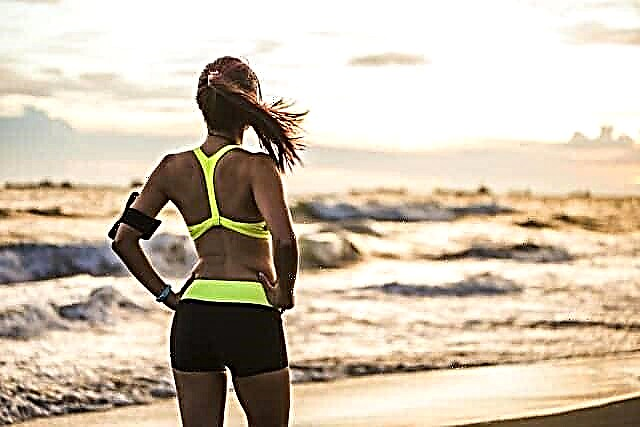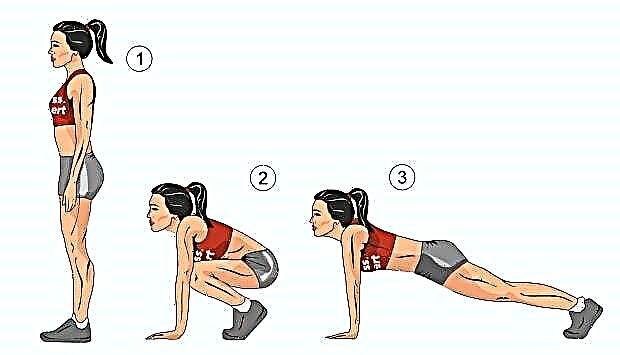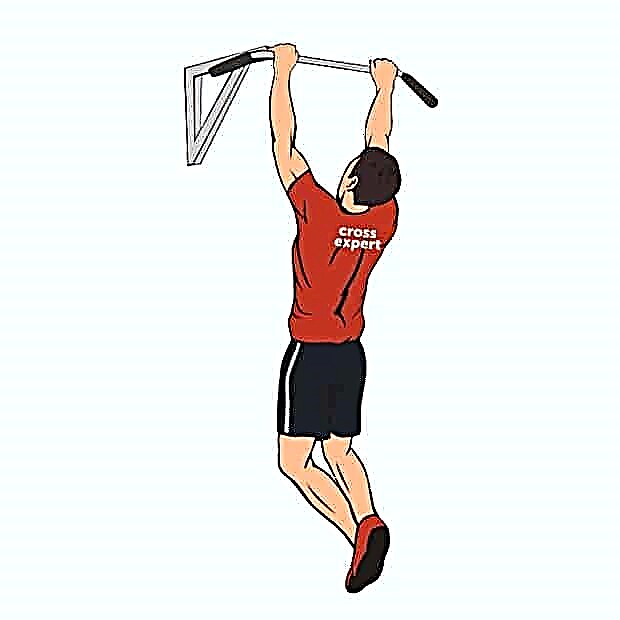Amino acids are organic substances consisting of a hydrocarbon skeleton and two additional groups: amine and carboxyl. The last two radicals determine the unique properties of amino acids - they can exhibit the properties of both acids and alkalis: the first - due to the carboxyl group, the second - due to the amino group.
So, we figured out what amino acids are in terms of biochemistry. Now let's look at their effect on the body and their use in sports. For athletes, amino acids are important for their participation in protein metabolism. It is from individual amino acids that proteins are built for the growth of muscle mass in our body - muscle, skeletal, liver, connective tissue. In addition, some amino acids are directly involved in metabolism. For example, arginine is involved in the ornithine urea cycle, a unique mechanism for detoxifying ammonia that is produced in the liver during protein digestion.

- From tyrosine in the adrenal cortex, catecholamines are synthesized - adrenaline and norepinephrine - hormones whose function is to maintain the tone of the cardiovascular system, an instant response to a stressful situation.
- Tryptophan is a precursor of the sleep hormone melatonin, which is produced in the pineal gland of the brain - the pineal gland. With a lack of this amino acid in the diet, the process of falling asleep becomes complicated, insomnia and a number of other diseases caused by it develop.
It can be listed for a long time, but let us dwell on the amino acid, the value of which is especially great for athletes and people who are moderately involved in sports.
What is glutamine for?
Glutamine is an amino acid that limits the synthesis of protein that makes up our immune tissue - lymph nodes and individual formations of lymphoid tissue. The importance of this system is difficult to overestimate: without proper resistance to infections, there is no need to talk about any training process. Moreover, every workout - no matter whether professional or amateur - is a dosed stress for the body.
Stress is a necessary condition to move our “point of balance”, that is, to cause certain biochemical and physiological changes in the body. Any stress is a chain of reactions that mobilize the body. In the interval characterizing the regression of the cascade of reactions of the sympathoadrenal system (namely, they are stress), there is a decrease in the synthesis of lymphoid tissue. For this reason, the decay process exceeds the rate of synthesis, which means that immunity is weakened. So, the additional intake of glutamine minimizes this extremely undesirable but inevitable effect of physical activity.

Essential and non-essential amino acids
To understand what essential amino acids are for in sports, you need to have a general understanding of protein metabolism. Proteins consumed by humans at the level of the gastrointestinal tract are processed by enzymes - substances that break down the food we have consumed.
In particular, proteins break down first into peptides - individual chains of amino acids that do not have a quaternary spatial structure. And already the peptides will break down into individual amino acids. Those, in turn, are assimilated by the human body. This means that amino acids are absorbed into the bloodstream and only from this stage can they be used as products for the synthesis of body protein.

Looking ahead, we will say that the intake of individual amino acids in sports shortens this stage - individual amino acids will be immediately absorbed into the bloodstream and the synthesis processes, as well as the biological effect of amino acids, will come faster.
There are twenty amino acids in total. In order for the process of protein synthesis in the human body to become possible in principle, the full spectrum must be present in the human diet - all 20 compounds.
Irreplaceable
From this moment on, the concept of irreplaceability appears. Essential amino acids are those that our body cannot synthesize on its own from other amino acids. And this means that they will appear nowhere, except from food. There are 8 such amino acids plus 2 partly replaceable ones.
Consider in the table in which foods each essential amino acid is contained and what is its role in the human body:
| Name | What products contain | Role in the body |
| Leucine | Nuts, oats, fish, eggs, chicken, lentils | Reduces blood sugar |
| Isoleucine | Chickpeas, lentils, cashews, meat, soy, fish, eggs, liver, almonds, meat | Restores muscle tissue |
| Lysine | Amaranth, wheat, fish, meat, most dairy products | Takes part in the absorption of calcium |
| Valine | Peanuts, mushrooms, meat, legumes, dairy products, many grains | Takes part in nitrogen exchange processes |
| Phenylalanine | Beef, nuts, cottage cheese, milk, fish, eggs, various legumes | Improving memory |
| Threonine | Eggs, nuts, beans, dairy products | Synthesizes collagen |
| Methionine | Beans, soybeans, eggs, meat, fish, legumes, lentils | Takes part in radiation protection |
| Tryptophan | Sesame, oats, legumes, peanuts, pine nuts, most dairy products, chicken, turkey, meat, fish, dried dates | Improves and deeper sleep |
| Histidine (partially non-replaceable) | Lentils, soybeans, peanuts, tuna, salmon, beef and chicken fillets, pork tenderloin | Takes part in anti-inflammatory reactions |
| Arginine (partially non-replaceable) | Yogurt, sesame seeds, pumpkin seeds, Swiss cheese, beef, pork, peanuts | Promotes the growth and repair of body tissues |
Amino acids are found in sufficient quantities in animal sources of protein - fish, meat, poultry. In the absence of such in the diet, it is highly advisable to take the missing amino acids as supplements in sports nutrition, which is especially important for vegetarian athletes.
The latter should focus on supplements such as BCAA, a mixture of leucine, valine and isoleucine. It is for these amino acids that a “drawdown” is possible in a diet that does not contain animal protein sources. For an athlete (both a professional and an amateur), this is absolutely unacceptable, since in the long term it will lead to catabolism from the internal organs and to diseases of the latter. First of all, the liver suffers from a lack of amino acids.

© conejota - stock.adobe.com
Replaceable
Replaceable amino acids and their role are considered in the table below:
| Name | Role in the body |
| Alanin | Takes part in liver gluconeogenesis |
| Proline | Responsible for building a strong collagen structure |
| Levocarnitine | Supports Coenzyme A |
| Tyrosine | Responsible for enzymatic activity |
| Serine | Responsible for building natural proteins |
| Glutamine | Synthesizes muscle proteins |
| Glycine | Reduces stress and reduces aggressiveness |
| Cysteine | Positively affects skin texture and condition |
| Taurine | Has a metabolic effect |
| Ornithine | Takes part in the biosynthesis of urea |
What happens to amino acids and proteins in your body
Amino acids that enter the bloodstream are primarily distributed to the tissues of the body, where they are most needed. If you have drawdowns on certain amino acids, taking in extra protein rich in them or taking in extra amino acids will be especially beneficial.
Protein synthesis occurs at the cellular level. Every cell has a nucleus - the most important part of the cell. It is in it that genetic information is read and reproduced. In fact, all information about the structure of cells is encoded in a sequence of amino acids.
How to choose amino acids for an ordinary amateur who moderately goes in for sports 3-4 times a week? No way. He just doesn't need them.
The following recommendations are more important for a modern person:
- Start eating regularly at the same time.
- Balance the diet for proteins, fats and carbohydrates.
- Remove fast food and low-quality food from the diet.
- Start drinking enough water - 30 ml per kilogram of body weight.
- Give up refined sugar.
These simple manipulations will bring much more than adding any kind of additives to the diet. Moreover, supplements without observing these conditions will be absolutely useless.
Why know what amino acids you need if you don't know what to eat? How do you know what the cutlets in the dining room are made of? Or sausages? Or what is the meat in the burger cutlet? We won't say anything about pizza toppings.
Therefore, before making a conclusion about the need for amino acids, you need to start eating simple, clean and healthy foods and follow the recommendations described above.
The same goes for supplemental protein intake. If you have protein in your diet, in the amount of 1.5-2 g per kilogram of body weight, you do not need any additional protein. Better to spend your money buying quality food.
It is also important to understand that protein and amino acids are not pharmaceuticals! These are just sports nutrition supplements. And the key word here is additives. Add them as needed.
To understand if there is a need, you need to control your diet. If you have already gone through the steps above and realized that supplements are still necessary, the first thing you should do is go to a sports nutrition store and select the appropriate product in accordance with your financial capabilities. The only thing that beginners should not do is buy amino acids with a natural taste: it will be difficult to drink them due to the extreme bitterness.
Harm, side effects, contraindications
If you have a disease characterized by intolerance to one of the amino acids, you know about it from birth, just like your parents. This amino acid should be avoided further. If this is not the case, there is no point in talking about the dangers and contraindications of additives, since these are completely natural substances.
Amino acids are a constituent part of protein, protein is a familiar part of the human diet. Everything that is sold in sports nutrition stores is not pharmacological! Only amateurs can talk about some kind of harm and contraindications. For the same reason, it makes no sense to consider such a concept as the side effects of amino acids - with moderate consumption, there can be no negative reactions.
Take a sober approach to your diet and sports training! Be healthy!









